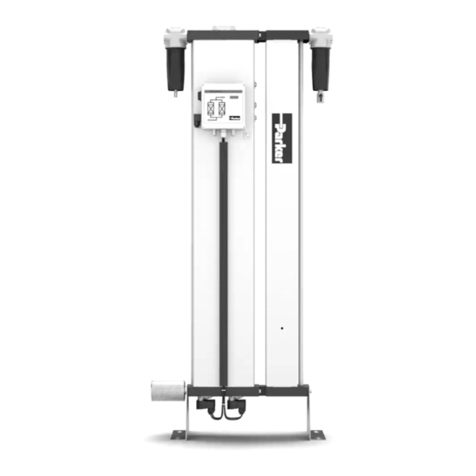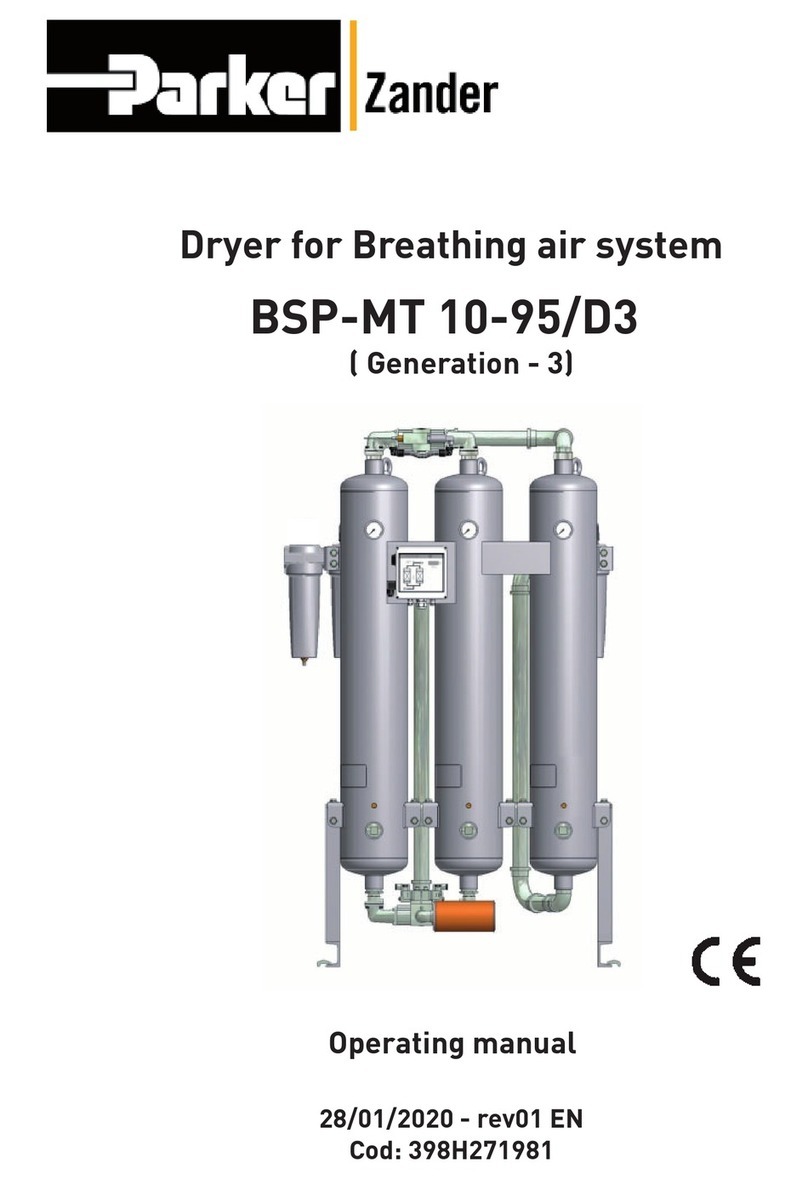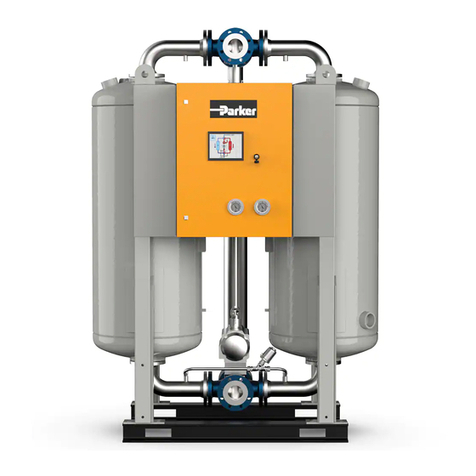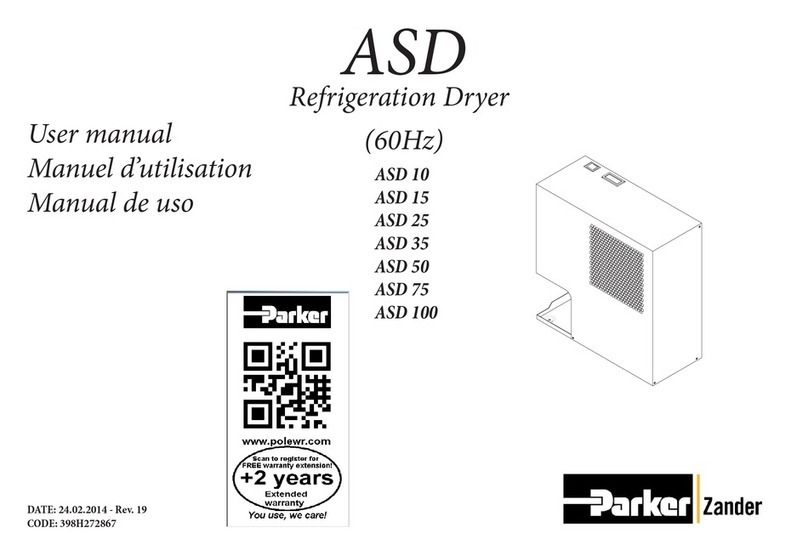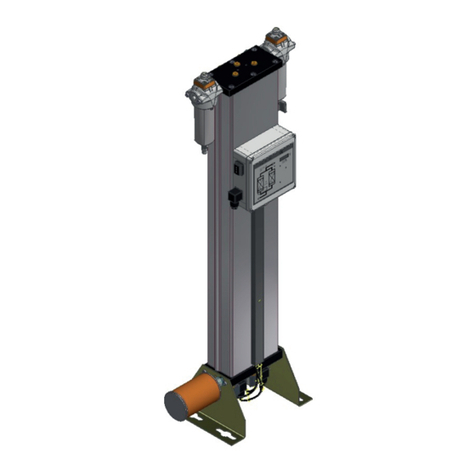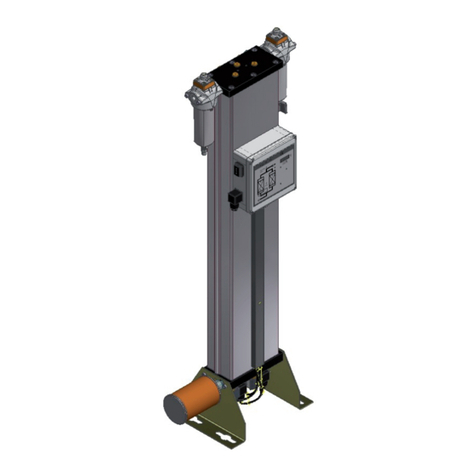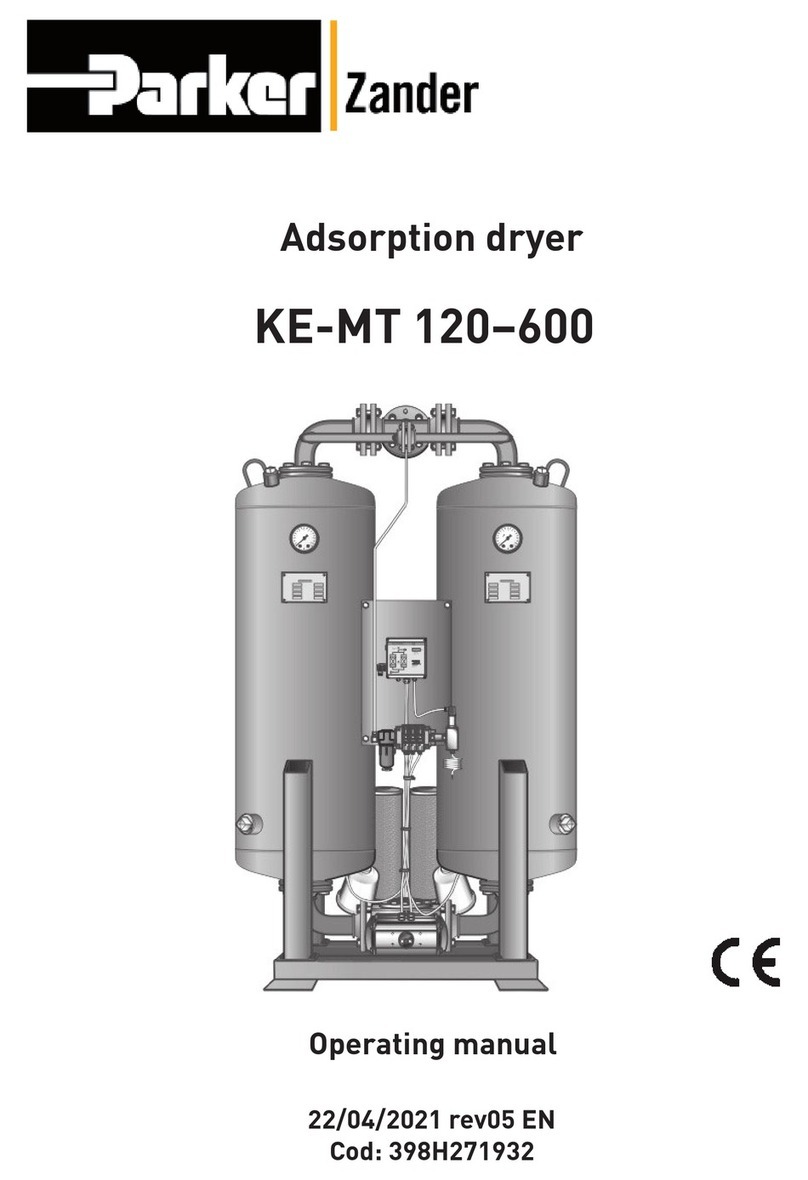
Table of contents
General Information.............................................................................................7
Manufacturer's details............................................................................................................7
Details on the dryer................................................................................................................7
About these operating instructions.........................................................................................8
Intended use of the dryer.......................................................................................................9
For your own safety.............................................................................................9
General safety notes............................................................................................................10
Signs and hazard areas on the dryer...................................................................................12
Technical Description .......................................................................................14
Layout..................................................................................................................................14
Function...............................................................................................................................15
Standard equipment ............................................................................................................16
Available options..................................................................................................................16
Transportation, installation and storage.........................................................18
What to do in the case of transport damage occurring?.......................................................18
Transporting the dryer to its installation site.........................................................................19
Installing and anchoring the dryer........................................................................................19
Storing the dryer..................................................................................................................21
Installation..........................................................................................................22
Recommended installation..................................................................................................22
Requirements for installation................................................................................................23
Connect piping.....................................................................................................................23
Installing the electrical connection........................................................................................24
Operating and control elements ......................................................................26
Commissioning..................................................................................................29
Requirements for initial start-up...........................................................................................30
Dryer settings.......................................................................................................................30
Emergency shutdown ..........................................................................................................31
Start up dryer.......................................................................................................................31
Recommended operating modes in the individual phases ...................................................33
Monitoring dryer operation...............................................................................34
With dewpoint-sensing control.............................................................................................34
Shutting down and restarting the dryer..........................................................35
Shutting down and depressurising the dryer........................................................................35
If work is to be carried out on the electrical system..............................................................36
Re-start................................................................................................................................36


